Contents
How to Repair Concrete
Options for cracks and craters
Damaged concrete isn’t just ugly. Holes and cracks let in water and—unless you live in a warm climate—that water does more damage when it freezes, expanding cracks and enlarging holes. Here are your options for fixing it.
Caulk cracks
The best caulks for concrete are usually labeled “urethane” or “polyurethane,” and most can fill cracks 1/2 in. wide or more (check the label). For any crack wider than 1/4 in., stuff in some foam backer rod first. Using backer rod saves expensive caulk and results in a stronger joint. And since it seals off the crack, it allows you to use runny “self-leveling” caulk, which usually provides a much neater look on flat surfaces.
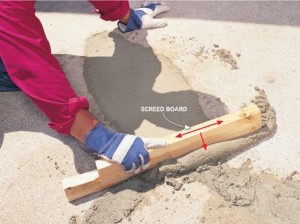
Patch craters
Chip out any loose concrete and then fill the hole with concrete repair mix. “Screed” off the excess by running a board across the repair in a sawing motion. When the mix becomes hard enough so that you can’t easily indent it with your thumb, finish the surface. To create a smooth surface, use a steel trowel. For a rough surface, drag a broom across it.
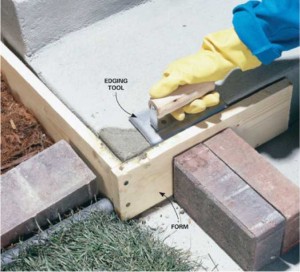
Rebuild a corner
Assemble an L-shaped wooden form, lock it in place with bricks and fill the void with concrete repair mix. A repair mix will stick to the old concrete better than standard concrete mix. If you don’t want to buy a special edging tool to round the edges of the patch, carefully shape the edges with a putty knife.
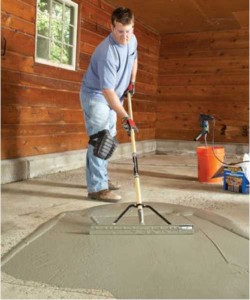
Resurface concrete
Resurfacer is a dry powder that’s mixed with water. It fills smaller holes and cracks and forms a durable new coating over the entire slab. The result is a surface that looks almost as good as new. In most cases, however, old cracks will eventually “telegraph” through the new surface.
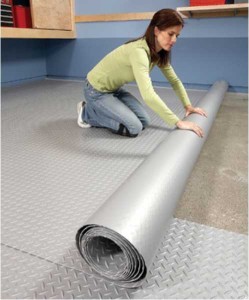
Hide a hopeless garage floor
Sometimes the best solution for a cracked, pockmarked garage floor is to simply cover it up. Online, you’ll find a huge selection of snap-together plastic tiles or mats designed to withstand vehicle traffic.
Raise sunken concrete
Sinking concrete that’s in otherwise good condition can be lifted back to its original level by a “mudjacker.” The contractor first drills holes in the concrete, then injects a slurry with tremendous pressure. That pressure can lift sidewalks, driveways, floors, even sinking steps.
Camouflage repairs
No concrete repair—caulk or patch—blends in perfectly with the old concrete. In fact, they sometimes look worse than damaged concrete. But there are a couple ways to hide the repair.
Coat with resurfacer
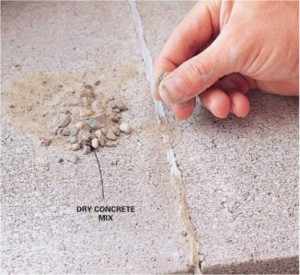
Resurfacer makes concrete look like new, hiding patches and filling small holes. The catch is that you have to coat all the concrete—resurfacing one area looks bad.
Disguise the caulk
Sprinkle a little dry concrete mix onto the wet caulk. When the caulk dries, sweep it off and the repair will be much less noticeable.
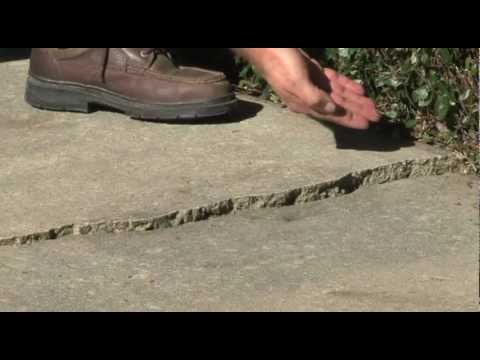
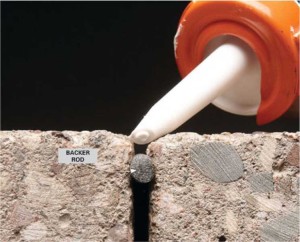
The basement floors in my basement are concrete and they have a few cracks. The patch method seems like a good thing for me to try. But I would be too scared for my floors to not be level anymore if I do that.